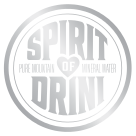Expert Opinion | What Causes White Crystals in Bottled Water?
Prof. Egbert Schnuse Dipl. Ing., MBA., M.Sc.
Hohenfriedingenstr.9
78315 Radolfzell – Germany
Expert German
Product and Environmental Analysis
Project Management and Controlling
BVFS – Nr.: 1490 / 3310
Expertcert Nr.: SCHNU-3-06/D05-7/SV/ProMa
Expert Opinion
Visible, white, crystalline mineral precipitations in Mineral Water filled in Glass and Polyethylenterephthalat (PET) bottles of different sizes.
Bottler: DRINI I BARDHE Sh.p.k
Str. Peja – Novoselle
30000 Peja – Novoselle
Republic of Kosovo
Label: “SPIRIT OF DRINI“
Preamble:
The company DRINI I BARDHE the manufacturer fills since 2015 natural mineral water directly from the source “DRINI I BARDHE “ in 30000 Peja – Radac , Republic of Kosovo in Glass and PET bottles of various sizes.
The company is HACCP accredited.
The mineral water SPIRIT OF DRINI is subject to ongoing controls from:
- Intern DRINI I BARDHE chemical, physical, microbiological laboratory certified ISO/IEC 17025:2005
- Institut Romeis, Germany
- SGS Institut Fresenius ,Germany
- Public Health Institut Kosovo, Departement Veterinary
Question:
In some Glass and PET bottles of different sizes are claimed by customers and consumers visible white crystalline particles, particle size 0,2 – 0,7 mm, perceived by the human eye as flocculation.
Analysis:
The crystalline particles were examined by various internal and external laboratories.
All analyses adduce the same result:
The white crystalline particles are Carbonates→CaCOɜor Calciumhydrogencarbonates →Ca(HCOɜ)₂.
Cause of the crystalline visible particles of Carbonates/Calciumhydrogencarbonates in the water “Spirit of Drini“:
How comes the Calcium carbonates in the water?
Calciumhydrogencarbonat forms during the water uptake of Calciumcarbonat through limestone mountain layers, essentially consist of Calcium carbonate by the action of water and Carbon dioxide.
The Carbon dioxide dissolves with water partly as Carbonic acid which continues to Hydrogen, the further dissociated to hydrogen carbonate and thereby provides protons.
At the same time, Calcium carbonate dissolves in small quantities in the water with the release of Carbonate–ions.
These take over the Hydrogen–ions offered by the Carbonic acid and likewise become hydrogen carbonate-ions.
Thus in the case of the Carbonate dissolution of limestone, in each case one equivalent proportion of Bicarbonate-ions, the other from the rock.
CaCOɜ+ CO₂+ H₂O ↔ Ca²+ (aq)+ 2 HCOɜˉˉ ( aq )
In order to keep in water Calciumhydrogencarbonat in solution, a certain concentration of a so-called “natural associated Carbonic Acid“ is needed.


Chemically, this is not different from any other Carbonic acid, it`s just about the proportion.
This associated Carbonic acid in the dissociation equilibrium with the existing hydrogen carbonate-ions, the pH of the water just so low, that in turn dependent share
on this pH value Carbonate-ions together with the existing Calcium-concentration just does not exceed the solubility of Calcium Carbonates.
The mineral water “SPIRIT OF DRINI“ contains 23 mg/ L natural Carbonic acid.
Calciumhydrogencarbonat thus exists only in aqueous solution in coexistence equivalent amounts of calcium and Hydrogen carbonate-ions.
The warmness for example from the natural spring temperature of 9 to over 20 degrees Celsius and different changing temperatures, the natural Carbon dioxide escapes from the water.
As a result, the dissociation equilibrium of the Carbonic acid shifts again in the direction of the Carbonate-ions, that is on the left side of the above reaction equation.
Conclusion
- In general, all uncarbonated mineral water`s which are flowing through limestone layers, mostly in the high mountain regions as the “Spirit of Drini“ natural mineral water comes from, have the effect to stabilize the Carbon dioxide to keep the Carbonates liquid.
- The crystallized particles are from natural origin and are absolutely harmless for consumption. The high quality of taste of the water “Spirit of Drini“ also remains the same.
Prof. Egbert Schnuse

